The intestines are a central part of the gastrointestinal tract, where food is digested and nutrients and water are absorbed. They take up most of the abdominal cavity.
The intestines actually comprise two organs – the small intestine and large intestine. These organs are themselves made up of several structures.
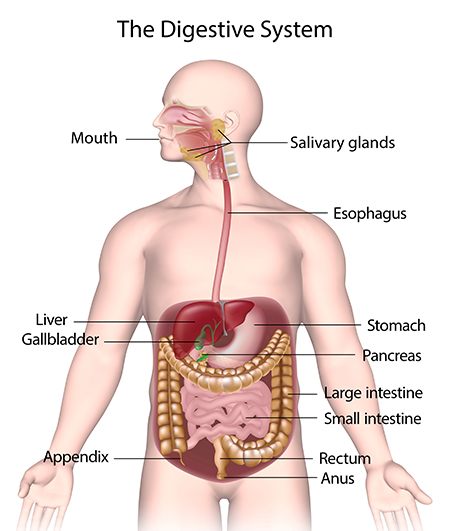
Small Intestines
Structure
The small intestine, or small bowel, is a long muscular tube that connects the pylorus of the stomach and cecum of the large intestine. It is comprised of three parts: the duodenum, jejunum, and ileum.
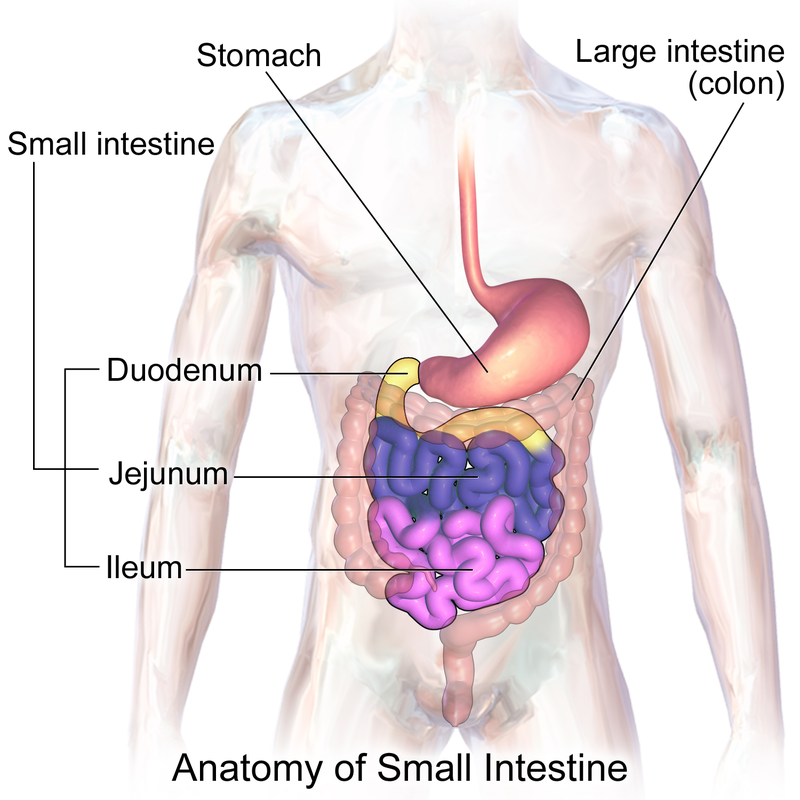
Function
The small intestine facilitates chemical digestion and absorbs nutrients and water via osmotic gradient. Each part of the organ has a slightly different structure that suits its particular function.
Duodenum: The partially broken down food mixture from the stomach, called chyme, and pancreatic enzymes mix in the duodenum to progress digestion. Entering the duodenum via the ampulla of Vater, bile from the liver aids in breaking down lipids for absorption. The stomach acid in the chyme is neutralized by bicarbonate that is secreted by the Brunner glands. Peristalsis pushes the digested material forward.
Jejunum: In the jejunum, carbohydrates, fatty acids, and amino acids are absorbed across the mucosa via the increased surface area of the villi into the blood supply that originates from the superior mesentaric artery.
Ileum: In the ileum, any remaining nutrients are absorbed – particularly vitamin B12 and bile acids for recycling. The villi contain goblet cells that secrete mucus.
Peristalsis
Peristalsis is an involuntary rhythmic movement of the muscles in the digestive tract that pushes the contents of the organ towards the exit.
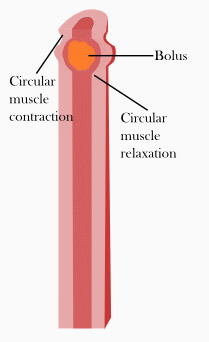
When the muscle is stretched, a reflex is stimulated – the peristaltic reflex. This reflex is reliant on the myenteric plexus, so it is sometimes called the myenteric reflex.
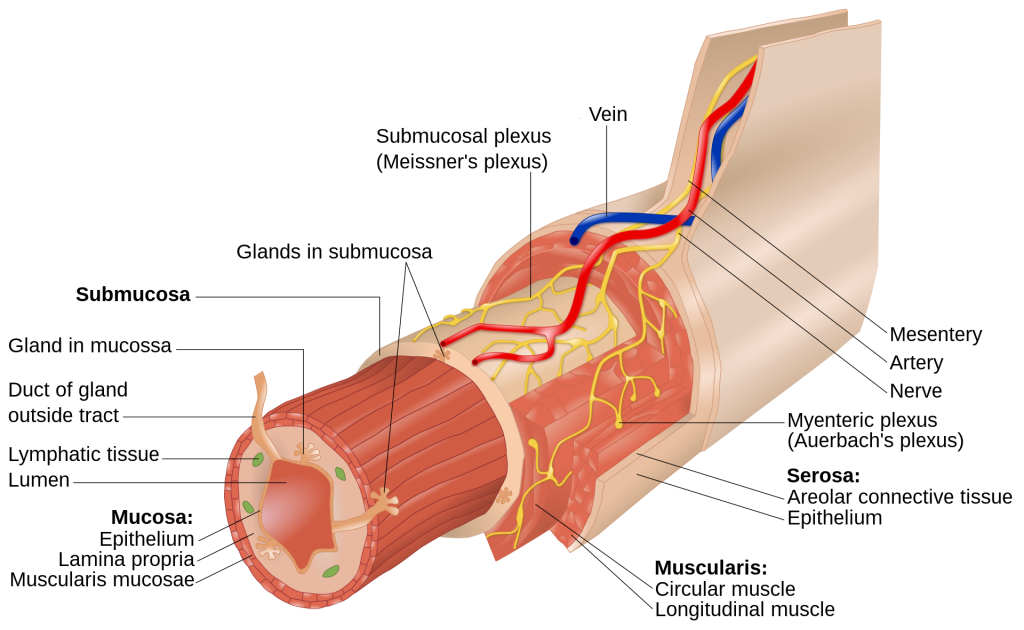
During the stimulating stretch, serotonin is secreted, affecting sensory neurons, and then two cholinergic pathways control peristaltic movement: the retrograde pathway (substance P and acetylcholine) causing contraction and the anterograde pathway (nitric oxide and vasoactive intestinal polypeptide) causing relaxation.
The ring of muscle above the bolus contracts as the ring of muscle below relaxes, exerting pressure on the contents and causing them to be pushed forward in the tract.
When chyme exits the stomach into the small intestine, peristalsis keeps it moving and pushes the mixture against the walls of the intestine to help with the absorption of nutrients into the bloodstream. In the large intestine, this same process aids in the absorption of water from the remaining digested material.
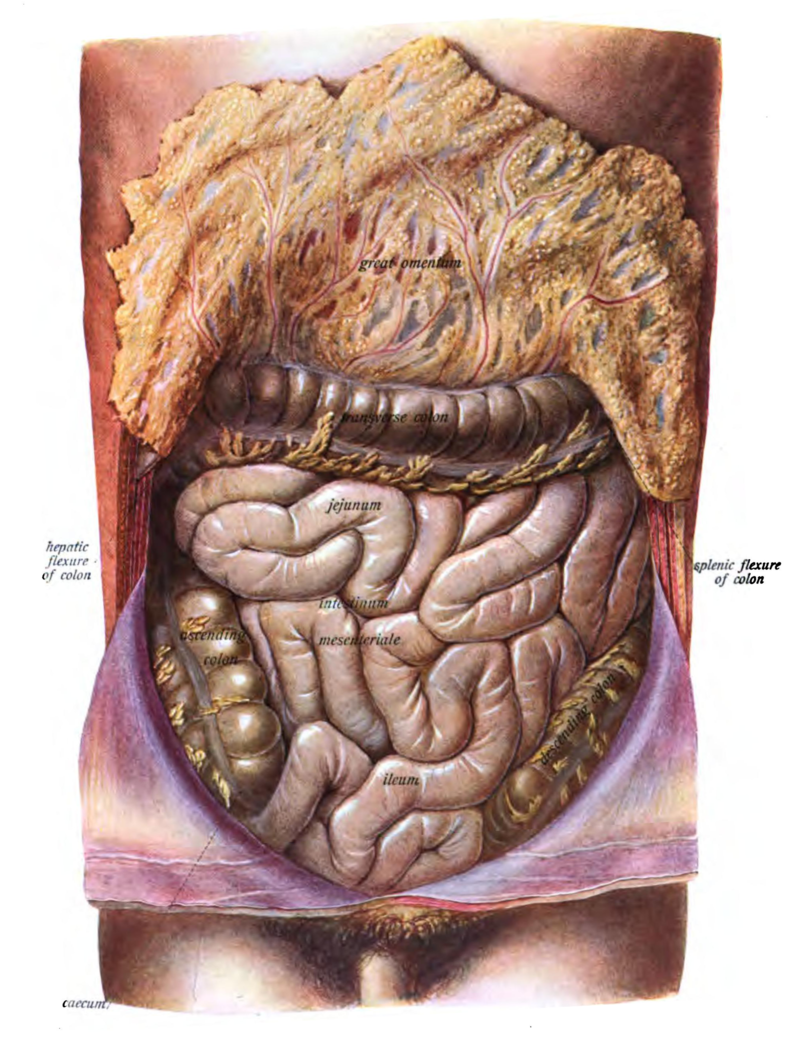
Large Intestine or Colon
Structure
The large intestine is made up of the cecum and colon. It is sometimes simply referred to as the large bowel. The anus and rectum are often grouped together with the colon (e.g., the terms colorectal and anorectal).
The appendix is a blind pouch that hangs off the cecum where it meets the ileum.
The colon is made up of three parts: ascending colon, transverse colon, and descending colon.
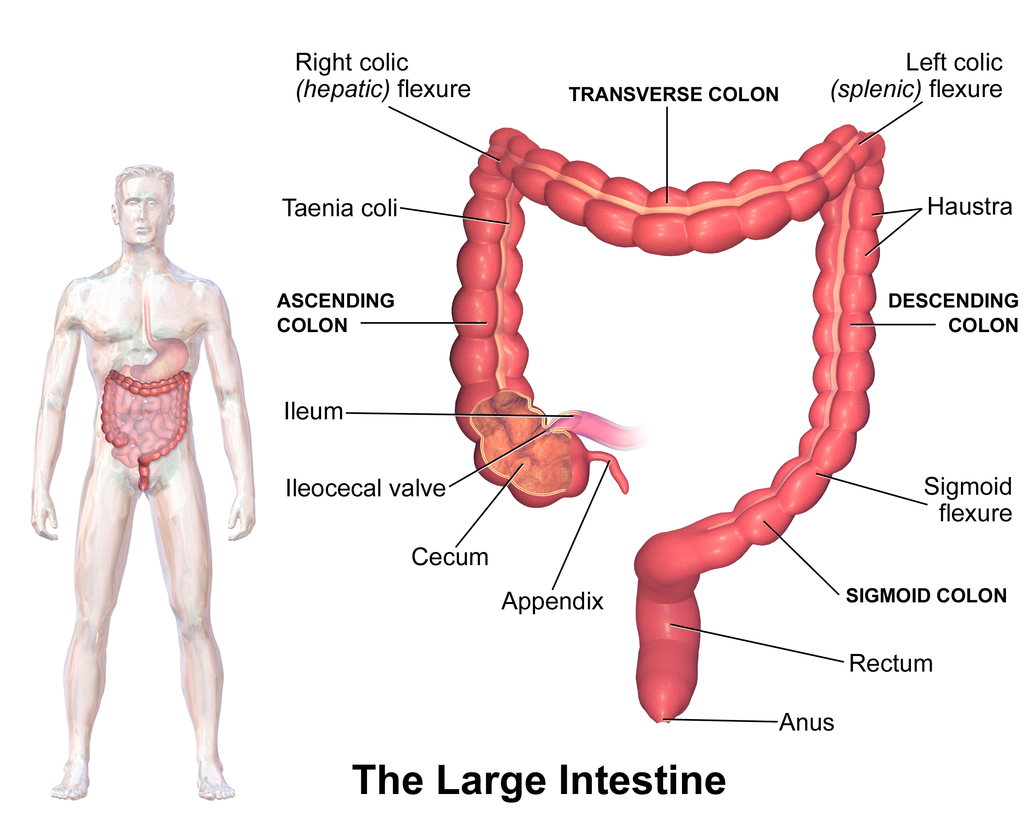
Function
Cecum: In the cecum, electrolytes and water are absorbed from the indigestible material remaining from digestion. The remaining waste is mixed with mucus for lubrication through the colon.
Ascending colon: In the ascending colon, any remaining water to be removed from the waste is absorbed and stool is formed.
Transverse colon: The transverse colon is where hydration and nutrition is balanced, with more water and electrolytes pulled from the stool as necessary, forming the final feces for excretion.
Descending colon: The feces is stored in the descending colon until it can be emptied into the rectum, which is the exit point via the anus.
Disclaimer: This page is for informational and learning purposes only. It is not meant to diagnose or treat any medical condition and should not be used in place of speaking with a medical doctor or seeking treatment.
Aliconia Publishing, LLC and the author make any and all attempts to ensure the accuracy of the presented facts. If you find an issue with any information on these pages, please use the Contact page to alert us. The content is subject to change based on new information or to be updated with additional facts. The date of last change is stated under the main header.
Discover more from Just Facts
Subscribe to get the latest posts sent to your email.